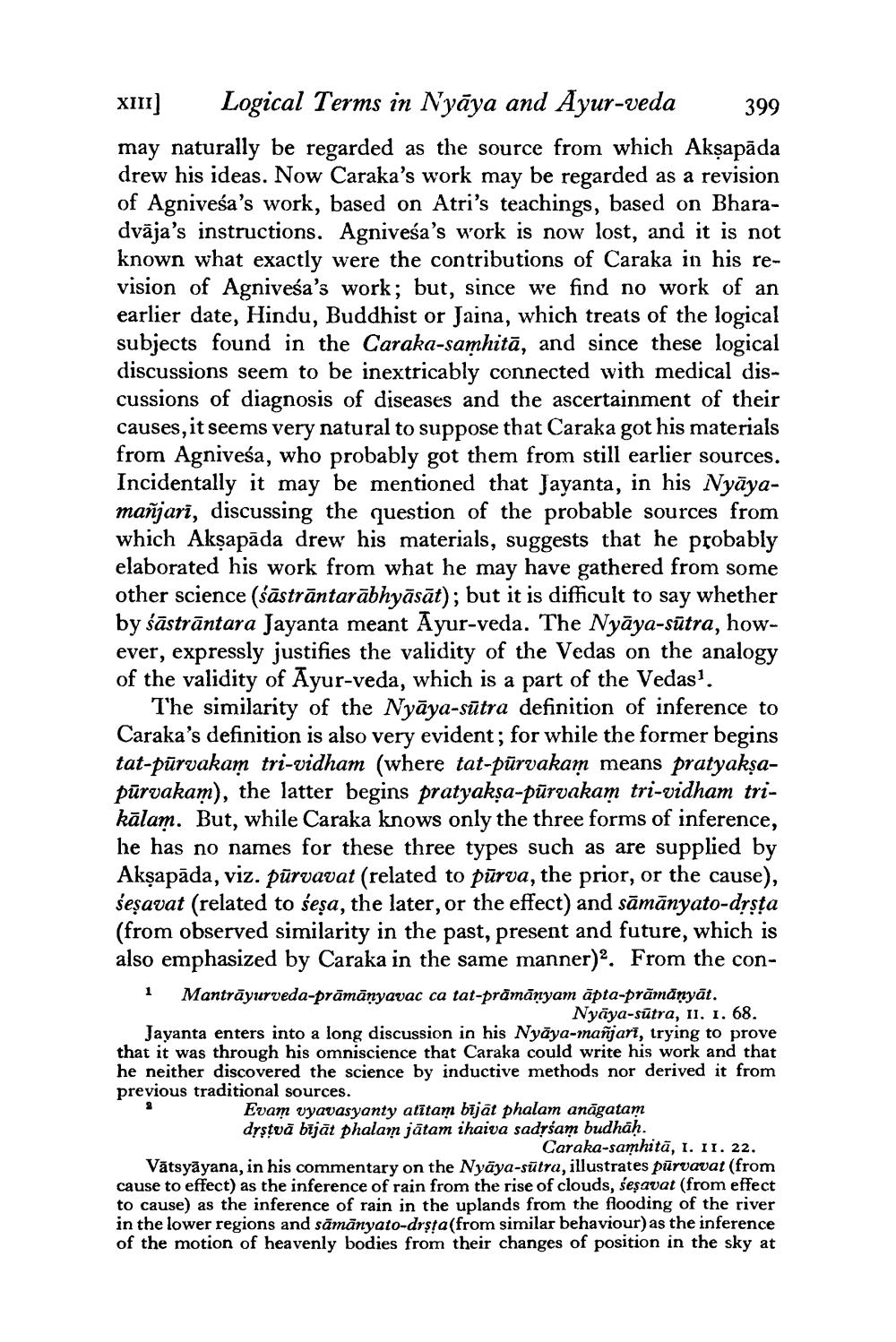________________
XII] Logical Terms in Nyāya and Ayur-veda 399 may naturally be regarded as the source from which Akşapāda drew his ideas. Now Caraka's work may be regarded as a revision of Agniveśa's work, based on Atri's teachings, based on Bharadvāja's instructions. Agniveśa's work is now lost, and it is not known what exactly were the contributions of Caraka in his revision of Agniveśa's work; but, since we find no work of an earlier date, Hindu, Buddhist or Jaina, which treats of the logical subjects found in the Caraka-samhitā, and since these logical discussions seem to be inextricably connected with medical discussions of diagnosis of diseases and the ascertainment of their causes, it seems very natural to suppose that Caraka got his materials from Agniveśa, who probably got them from still earlier sources. Incidentally it may be mentioned that Jayanta, in his Nyāyamañjarī, discussing the question of the probable sources from which Akşapāda drew his materials, suggests that he probably elaborated his work from what he may have gathered from some other science (śāstrāntarābhyāsāt); but it is difficult to say whether by śāstrāntara Jayanta meant Ayur-veda. The Nyāya-sūtra, however, expressly justifies the validity of the Vedas on the analogy of the validity of Ayur-veda, which is a part of the Vedas.
The similarity of the Nyāya-sūtra definition of inference to Caraka's definition is also very evident; for while the former begins tat-pūrvakam tri-vidham (where tat-pūrvakam means pratyakşapūrvakam), the latter begins pratyaksa-pūrvakam tri-vidham trikālam. But, while Caraka knows only the three forms of inference, he has no names for these three types such as are supplied by Akşapāda, viz. pūrvavat (related to pūrva, the prior, or the cause), seșavat (related to seșa, the later, or the effect) and sāmānyato-drsta (from observed similarity in the past, present and future, which is also emphasized by Caraka in the same manner)2. From the con1 Mantrāyurveda-prāmānyavac ca tat-prāmānyam āpta-prāmānyāt.
Nyāya-sūtra, II. 1. 68. Jayanta enters into a long discussion in his Nyāya-mañjari, trying to prove that it was through his omniscience that Caraka could write his work and that he neither discovered the science by inductive methods nor derived it from previous traditional sources.
Evam vyavasyanty atītam bījāt phalam anāgatam dystvā bijāt phalam jātam ihaiva sadyśam budhah.
Caraka-samhitā, 1. II. 22. Vātsyāyana, in his commentary on the Nyāya-sūtra, illustrates pūrvavat (from cause to effect) as the inference of rain from the rise of clouds, seşavat (from effect to cause) as the inference of rain in the uplands from the flooding of the river in the lower regions and sāmānyato-drşta(from similar behaviour) as the inference of the motion of heavenly bodies from their changes of position in the sky at




